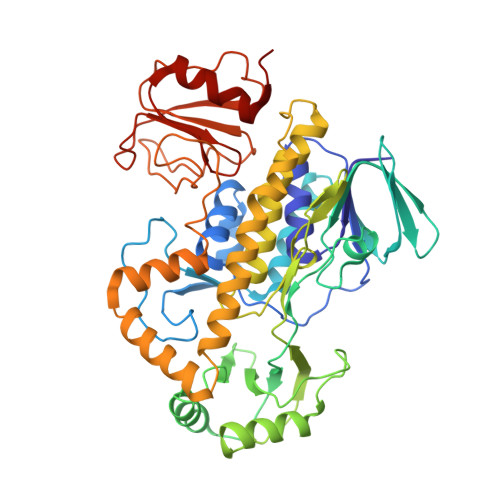Rox, a Rifamycin Resistance Enzyme with an Unprecedented Mechanism of Action.
Koteva, K., Cox, G., Kelso, J.K., Surette, M.D., Zubyk, H.L., Ejim, L., Stogios, P., Savchenko, A., Sorensen, D., Wright, G.D.(2018) Cell Chem Biol 25: 403-412.e5
- PubMed: 29398560
- DOI: https://doi.org/10.1016/j.chembiol.2018.01.009
- Primary Citation of Related Structures:
5VQB, 6BRD - PubMed Abstract:
Rifamycin monooxygenases (Rox) are present in a variety of environmental bacteria and are associated with decomposition of the clinically utilized antibiotic rifampin. Here we report the structure and function of a drug-inducible rox gene from Streptomyces venezuelae, which encodes a class A flavoprotein monooxygenase that inactivates a broad range of rifamycin antibiotics. Our findings describe a mechanism of rifamycin inactivation initiated by monooxygenation of the 2-position of the naphthyl group, which subsequently results in ring opening and linearization of the antibiotic. The result is an antibiotic that no longer adopts the basket-like structure essential for binding to the RNA exit tunnel of the target RpoB, thereby providing the molecular logic of resistance. This unique mechanism of enzymatic inactivation underpins the broad spectrum of rifamycin resistance mediated by Rox enzymes and presents a new antibiotic resistance mechanism not yet seen in microbial antibiotic detoxification.
Organizational Affiliation:
M.G. DeGroote Institute for Infectious Disease Research, Department of Biochemistry and Biomedical Sciences, DeGroote School of Medicine, McMaster University, 1280 Main Street West, Hamilton, ON L8S 4K1, Canada.


















